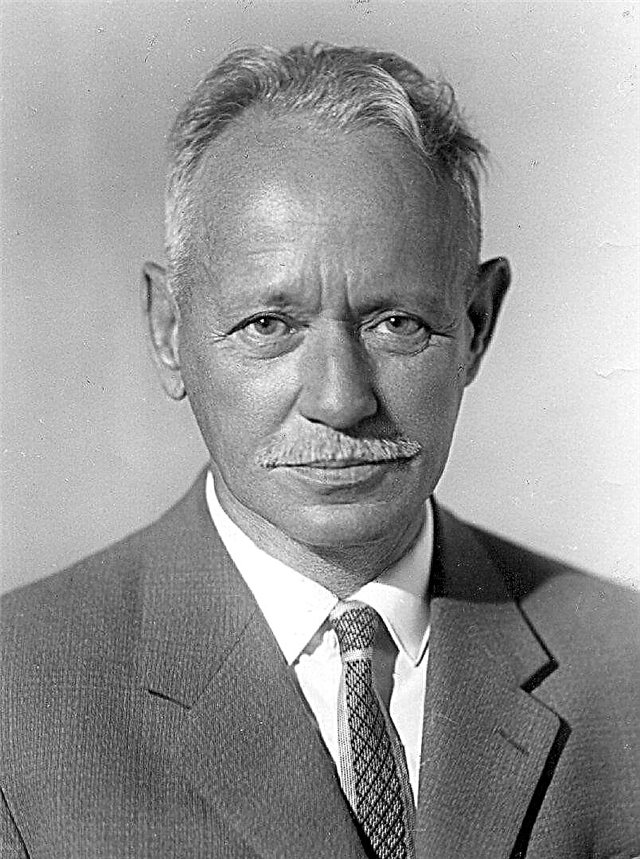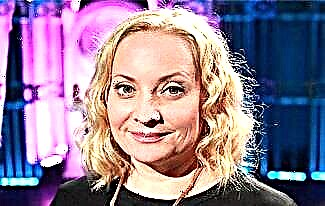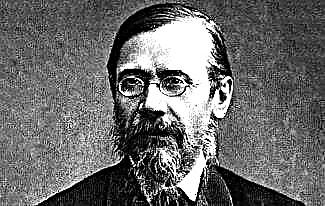Salvador Dali (1904 - 1989) was one of the brightest painters of the 20th century. Dali shocked the audience and at the same time very sensitively followed her mood. The artist subverted God in Europe and scattered accusations of atheism in the United States. And, most importantly, any eccentricity brought money to Dali. If the creations of most artists became valuable only after their death, Salvador Dali was very successful in realizing his creations during his lifetime. He turned the free search for truth into a very good means of earning.

In the selection below, there is no chronology of the writing of Salvador Dali's paintings, the interpretation of their meanings or artistic analysis - millions of pages have already been written about this. These are mostly just incidents from the life of a great artist.
1. Salvador Dali spoke orally and wrote in his autobiographical book that his parents considered him the reincarnation of an older brother who died at the age of seven and he had meningitis. It is difficult to say whether the painter himself knew about this, but in fact, Salvador Dali, the first (his older brother was called by the same name), lived only 22 months and died, most likely of tuberculosis. Salvador Dali the second was conceived a few days after the death of his older brother.
2. The future painting genius studied without much success in the municipal and monastery schools. His first academic successes, as well as his first friends, appeared only in an evening drawing school, where Dali and his friends even published a magazine.
3. As it should be in those years for every young man, Dali adhered to leftist, almost communist views. When he was assigned to give a speech at a rally to celebrate Germany's surrender in World War I, he unexpectedly ended his fiery speech with the words: “Long live Germany! Long live Russia!" In those days, powerful revolutionary processes were taking place in both countries.
4. In 1921, Dali entered the Royal Academy of Fine Arts in Madrid. The admissions committee called his drawing, made as an entrance test, "impeccable" so much that the commission turned a blind eye to the violation of the rules for the execution of drawings and enrolled the artist as a student.
5. While studying at the Academy, Dali first tried to shock the audience with his bright appearance, and then tried to change his image, cutting his hair and dressing like a dandy. It almost cost him his eyes: to smooth the curly stripes, he used varnish to cover, oil paintings. It could be washed off only with turpentine, which is very dangerous for the eyes.
6. In 1923, the artist was expelled from the Academy for a year for participating in protests against the appointment of a teacher objectionable to students. Moreover, after returning to his hometown, Dali was arrested. However, despite all fears, the arrest was made only for verification.
7. Not having time to really resume his studies at the Academy, Dali was finally expelled from it for academic failure. He missed two tests, and told the Fine Arts Theory examiners that he doubted the professors could assess his level of knowledge.
8. Federico García Lorca and Salvador Dali were friends, and for the outstanding poet the nature of this friendship is still described as “in those days among the bohemians, this friendship was not seen as anything reprehensible”. Most likely, Dali rejected Lorca's claims: “Lorca's shadow darkened the original purity of my spirit and my flesh,” he wrote.

Federico Garcia Lorca
9. The script of the film "Andalusian Dog", written by Luis Buñuel and Dali, even in the text looked so that, for all their recklessness, the authors did not dare to look for third-party sponsors. Buñuel took the money from his mother. Friends spent half of the amount, and for the remainder they shot a sensational film, the success of which upset Buñuel.

Luis Buñuel
10. At the very beginning of Dali's acquaintance with Gala Bunuel, who did not like Gala very much, almost strangled her on the beach. Dali, instead of protecting his beloved, begged Buñuel on his knees to let the girl go.
11. Later, in his autobiographical book The Secret Life of Salvador Dali, the artist called Buñuel an atheist. In 1942, in the United States, this was tantamount to denunciation - Bunuel immediately flew from work. To his accusations, Dali replied that he wrote the book not about Buñuel, but about himself.
12. Until the age of 25, until he met Gala, Dali had no sexual relations with women. The artist's biographers believe that such shyness was caused by psychological rather than physiological problems. And even as a child, a medical reference book with eloquent images of ulcers resulting from sexually transmitted diseases fell into the hands of El Salvador. These images scared him for life.
13. Muse Dali Galá (1894 - 1982) in the world was called Elena Ivanovna (after her father Dimitrievna) Dyakonova. She was Russian, originally from Kazan. Her family, along her mother's side, owned gold mines, her stepfather (her father died when the girl was 11 years old) was a successful lawyer. Gala from the age of 20 was treated for tuberculosis, which was then almost a death sentence. Nevertheless, Gala lived a very fulfilling life in all respects and died at the age of 87.

Dali and Gala
14. In 1933, a source of independent stable income appeared for the first time in Dali's life (before that, all expenses were paid by his father). Gala convinced Prince Fosini-Lusenge to create a club of 12 people for the artist. The club, called "Zodiac", pledged to pay Dali 2,500 francs a month, and the artist had to give his participants a large painting or a small painting and two drawings once a month.
15. The secular marriage of Dali and Gala, whose relationship began in late summer or early autumn 1929, was concluded in 1934, and the couple got married in 1958. Pope Pius XII did not give permission for the wedding, and John XXIII, who succeeded him, was more supportive of Gala's divorce (since 1917 she was married to the poet Paul Eluard).
16. At one of the exhibitions in London, Dali decided to perform in a diving suit. He had to be ordered from a specialized company. The master, who brought the costume, conscientiously tightened all the nuts on the helmet and went for a walk around the exhibition - he was told that the performance would last half an hour. In fact, Dali began to choke in the first minutes. They tried to unscrew the nuts with the help of improvised means, then knocked down with a sledgehammer. At the sight of a dazed Dali, greedily gasping for air, the audience fell into ecstasy - it seemed that all this was part of a surreal performance.
17. Once in New York, workers incorrectly designed a shop window according to Dali's sketch. The owner refused to change anything. Then the artist entered the window from the inside, smashed it and threw out a bathtub, which was an element of decor, into the street. The police were right there. Gala immediately called journalists, and Dali, who refused to pay the deposit, received a gorgeous advertisement. The judge actually recognized him in the right, punishing Dali only with a demand for damages: “The artist has the right to defend his creations”. The fact that the artist staged a rout precisely because it was not what he had in mind, apparently, did not fit into the mind of the judge.
18. Dali greatly revered Sigmund Freud and his teachings. The founder of psychoanalysis, in turn, held traditional, if not conservative, views on painting. Therefore, when Dali came to Italy in 1938, Freud agreed to meet with him only after numerous requests from mutual acquaintances.
19. Dali called the atomic bombing of Japanese cities “a seismic phenomenon”. In general, the horrors of the war had very little effect on his work.
20. Dali's biographers, when referring to his collaboration with Hollywood, often cite lack of funding as a reason for failure. In fact, both Walt Disney and Alfred Hitchcock were willing to collaborate with the artist, but with the condition of being able to correct his work. Dali firmly refused, and then the financial argument came into force.
21. In the late 1970s, Amanda Lear appeared in a rather large circle of young people who surrounded Dali and Gala. Gala, who was jealous of her husband to all female representatives, took the singer favorably and even demanded an oath from her to be with Dali after her death. Amanda made the old woman happy with an oath, and a few months later she married a French aristocrat.

Salvador Dali and Amanda Lear
22. Not long before his death, Gala was seized by an unreasonable fear of poverty. Although they lived separately, the wife constantly encouraged the artist to work or at least just sign blank sheets of paper. The implication was that they were paid for as for autographs. After Dali's death, lawyers grabbed their heads: according to various estimates, the artist signed tens of thousands of sheets, but which could be placed anything you want - from a drawing to an IOU.
23. In the winter of 1980, while in the United States, the couple fell ill with the flu. Dali was 76, Gala was 10 years more. This disease, in fact, became fatal for them. Gala died after a year and a half, Dali held out for another eight years, but most of this time he could not do anything without outside help.
24. Gala died in Port Lligat, but she had to be buried in Pubol, the family castle rebuilt by Dali a few dozen kilometers away. Spanish law prohibits the transportation of the bodies of the dead without the permission of the central authorities (this law was adopted during the time of epidemics). Dali did not ask for, and did not wait for permission, transporting the body of his wife in his Cadillac.

Castle Pubol
25. In 1984, a short circuit occurred in the button that bedridden Dali called a nurse. The artist was even able to get out of the burning bed. He received severe burns and still lived for another five years. He died in the hospital from heart failure.









